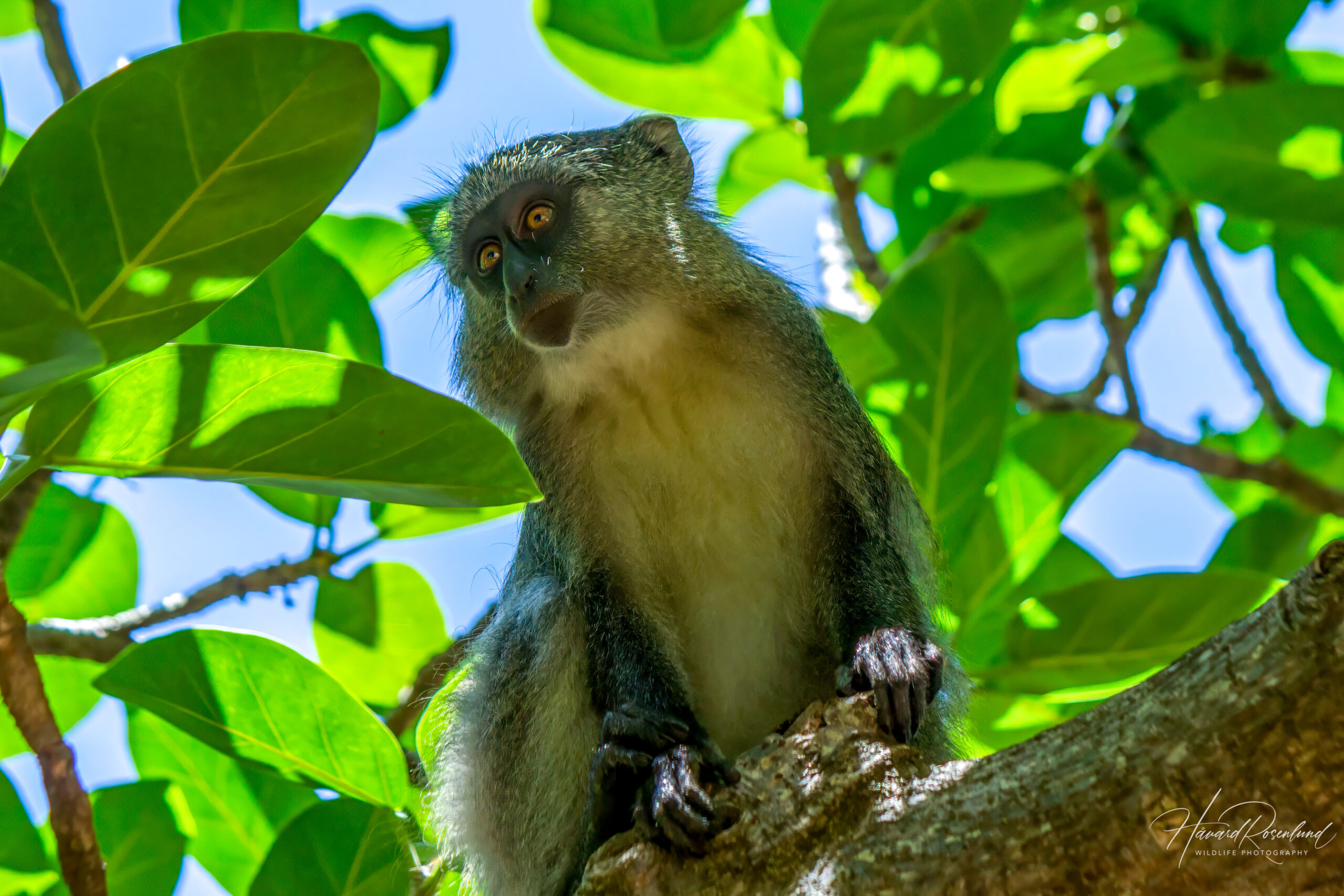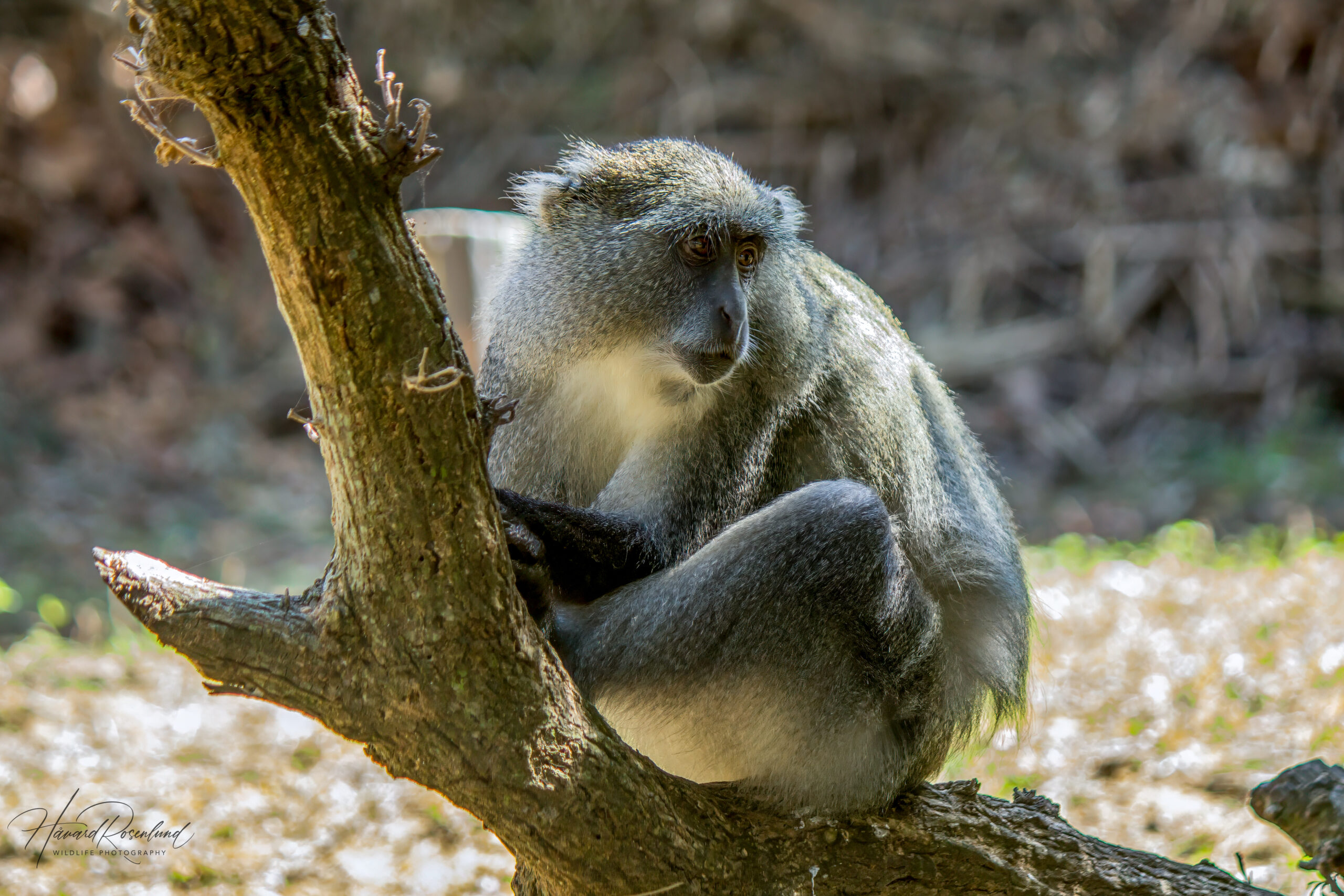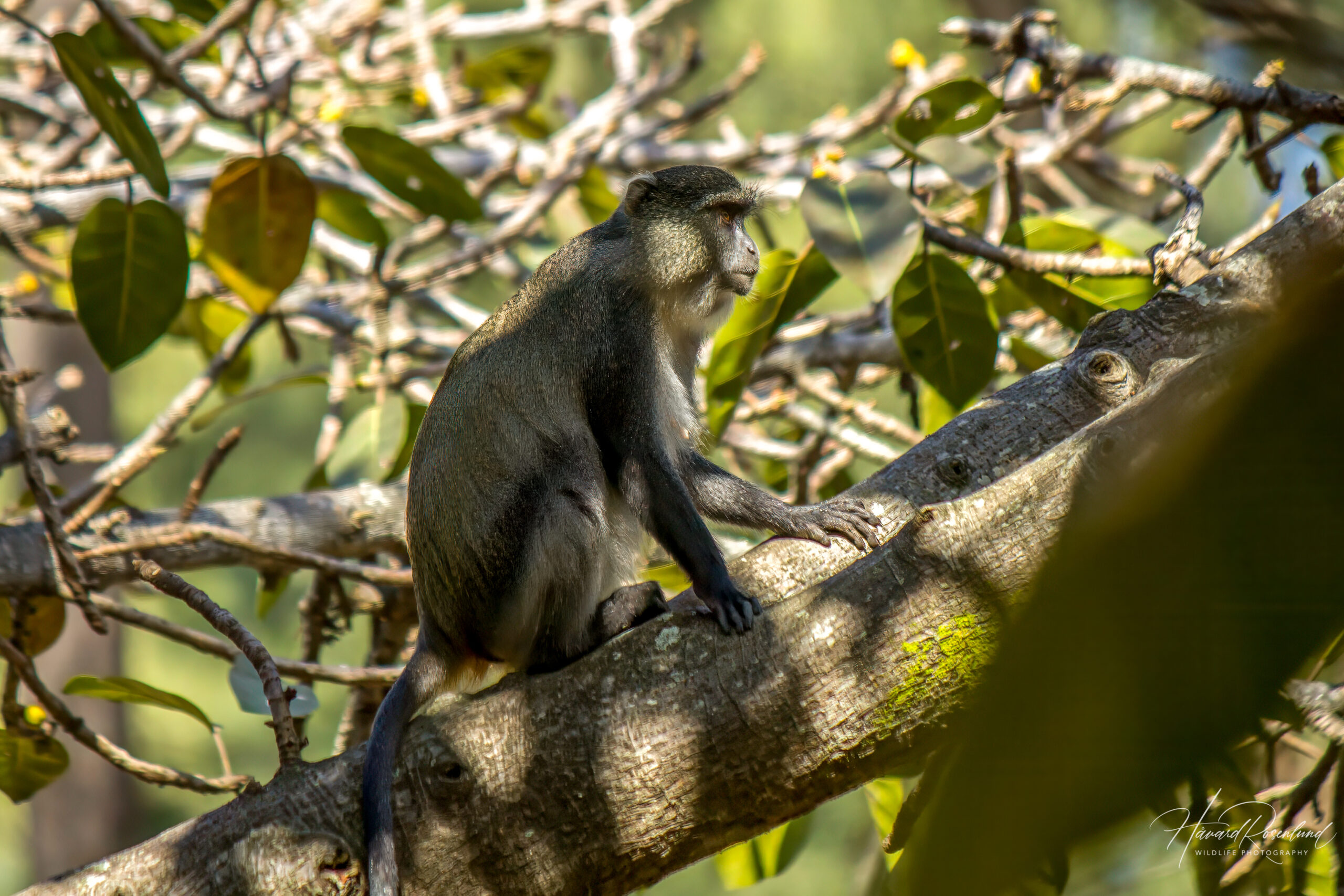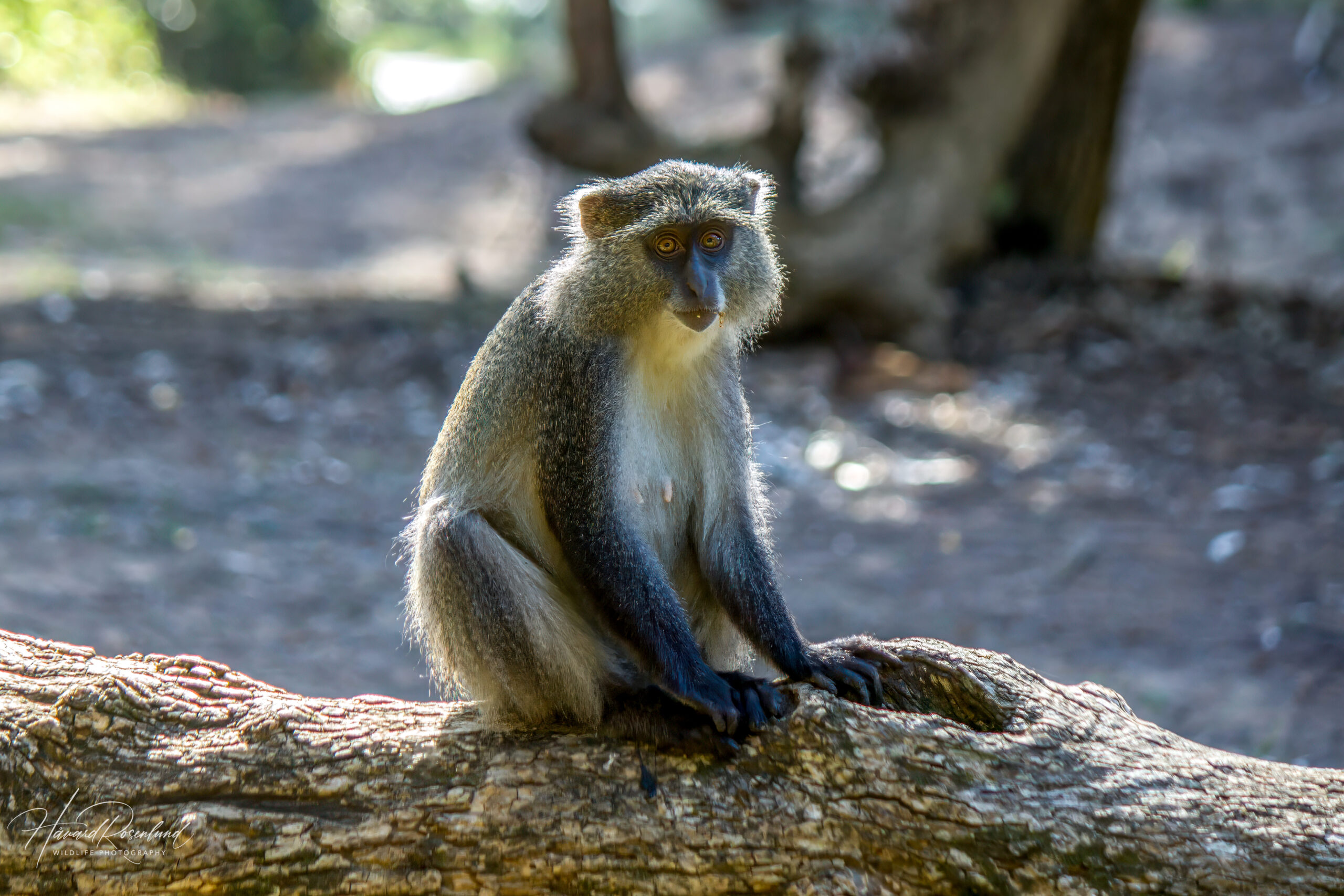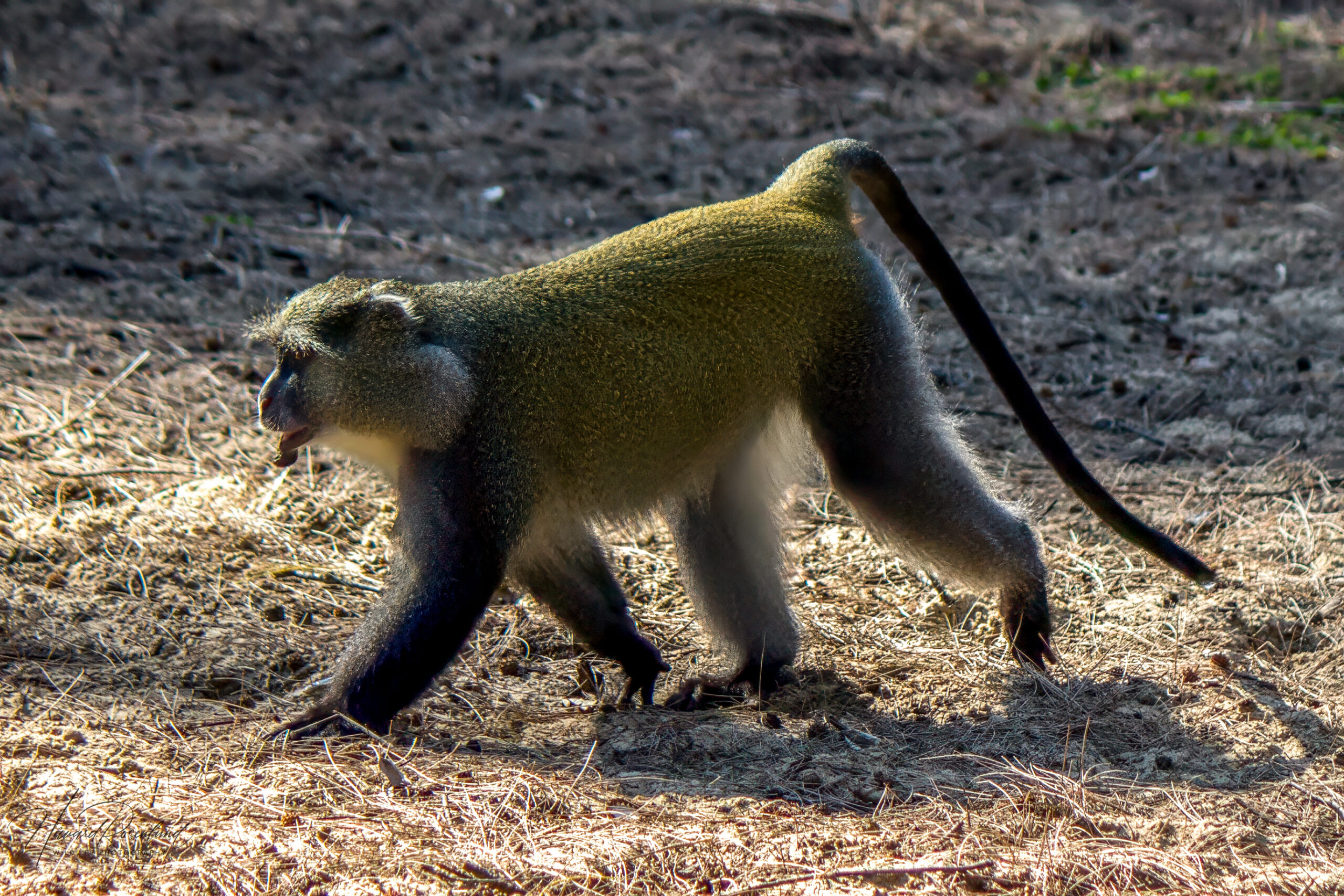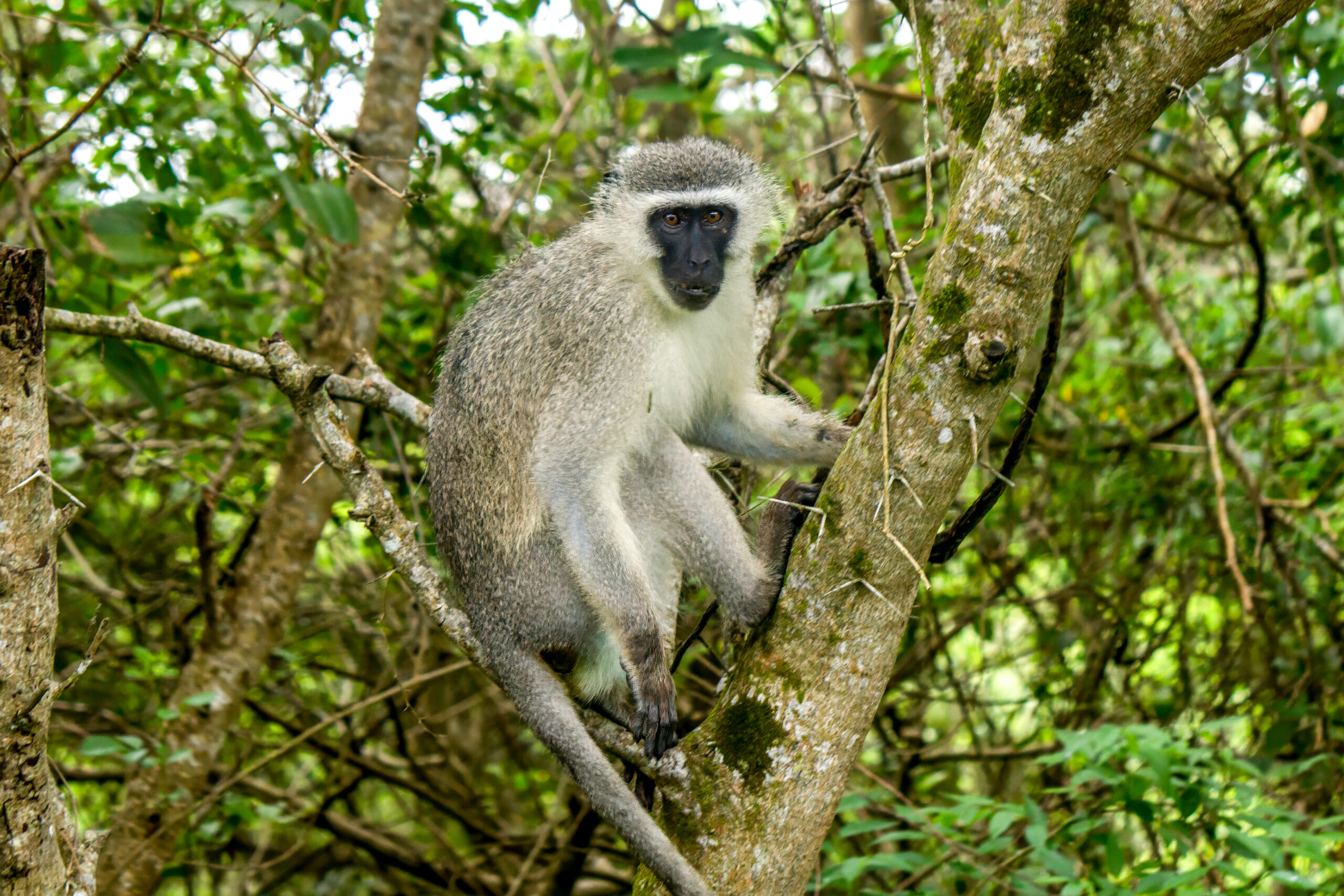Description
The blue monkey (Cercopithecus mitis), also known as Samango monkey, Syke’s monkey, diademed monkey, and golden monkey, depending on subspecies and area, is a widespread species of guenon in sub-Saharan Africa. Some subspecies are sometimes regarded as separate species, such as the Samango/Syke’s monkey and the golden monkey, but I have chosen to go by the official information on the IUCN (International Union for Conservation of Nature) website where they are all subspecies of the blue monkey.
Color varies between geographical locations and subspecies, but blue monkeys typically have an olive to grey coat with darker arms and legs. Exposed skin, such as feet and face, is dark. A light to yellowish patch above the eyes has given it the common name diademed monkey in some areas. Blue monkeys are actually not very blue, but the general appearance can often come across as bluish, especially on the darker areas such as face, arms and legs. They reach lengths of 50-65 cm (19-26 in), excluding the tail which can reach nearly the same length as the body. Males are larger than females and can weigh up to 9 kg (20 lb.), whereas females weigh 4-5 kg (9-11 lb.).
Diet, habitat & behavior
Blue monkeys prefer various forms of evergreen forests and montane forests with adequate shade and water supply. They spend most of their time in trees, as they forage in the canopy and rarely venture down to the ground. Their main diet consists of fruits, flowers, and leaves, but they will also feed on insects and other invertebrates.
Blue monkeys are generally shy, but have, in certain areas, adapted to live in close proximity to humans. In areas such as Sodwana Bay and Cape Vidal in South Africa they will readily steal unattended food from tourists. In these areas they are also commonly seen on the ground. A study done in South Africa showed that blue monkeys would only go down to the forest floor and eat food when the researchers were close by. They understand that the presence of researchers poses no threat to them and that other predators, such as leopard and eagle, will stay away as long as researchers are present.
Social behavior
Blue monkeys live in social groups of 10-40 individuals. One group normally consists of one dominant male and his harem of females with young. Dominant males stay with one group for up to three and a half years. Young males will stay within the group until they are six years old. Upon leaving the group males often join small bachelor groups of 2-3 individuals before attempting takeovers of other female groups. Females within a group live in a dominance hierarchy, but they are seldom aggressive towards one another. Competition is generally avoided as females tend to forage away from other females. The internal ranking system is seldom visible until there is more competition within the group, such as during periods with fewer available resources.
Reproduction
Blue monkeys are seasonal breeders and females typically give birth at the beginning of the warmer wet season. The male will mate with all of his adult females, but the females are the ones that initiate the mating. A single infant is born after a gestation period of five months. As with vervet monkeys, blue monkeys have a system of alloparenting, where young females take care of infants belonging to other females. It is common for one infant to have multiple caretakers, and it is believed this is done to make the infant more familiar with the social aspects within the group. Both sexes reach sexual maturity at about three years of age, and females often have their first infant at the age of seven. Blue monkeys can live to be thirty years old.
Status & subspecies
The blue monkey is a widespread species of guenon found in many areas across Central Africa, East Africa, and Southeastern Africa. There are many different populations and subspecies separate from each other, and some of these are threatened or endangered, but the species as a whole is considered to be of least concern on the IUCN Red List.
There are sixteen recognized subspecies of blue monkey. In South Africa there are two subspecies, Cercopithecus mitis erythrarchus and Cercopithecus mitis labiatus, and both are commonly referred to as Samango monkey. C. m. erythrarchus, also known as Stairs’ white-collared monkey, is the one I’ve observed and photographed. It is found along the northeast coast of South Africa, from the iSimangaliso Wetland Park up to the Mozambiquan border, and further through Mozambique up to Malawi. It is not a threatened subspecies. Some list both Samango monkey subspecies as part of a separate species, Cercopithecus albogularis, and then refer to this nominate species as the Sykes’ monkey. This has not been officially recognized.
Seven of the subspecies are threatened, and they are the following:
Lomami River blue monkey (C. m. heymansi) is found in the middle of the Democratic Republic of the Congo, along the Lomami River. It is threatened mostly by hunting for bushmeat, which is a common practice in the region. It is listed as near threatened.
Boutourlini’s blue monkey (C. m. boutourlinii) is found in western Ethiopia. Not much is known, but it is believed to have seen a decline in numbers due to habitat loss, fragmentation and poaching. It is listed as vulnerable.
Pluto monkey (C. m. mitis) is found on the western coast of Angola. It is threatened by the destruction and fragmentation of habitats and poaching for bushmeat. It is listed vulnerable.
Samango monkey (C. m. labiatus) is endemic to South Africa, where it exists along the southeastern coast up to Richard’s Bay, and then inland up through Eswatini and into Limpopo province. The population is heavily fragmented and it is found only in remaining forest patches after agricultural practices cleared most of its preferred forest habitat. The subspecies is believed to number 35,000 individuals. It is listed as vulnerable.
Golden monkey (C. m. kandti) is found in two small populations. One in western Rwanda and one on the northern border of Rwanda and the Democratic Republic of the Congo. It is often observed on gorilla safaris in the region. The small population makes it vulnerable to further changes in the environment and diseases from tourism. It is listed as endangered.
Manyara monkey (C. m. manyaraensis) is endemic to a small area in Tanzania in and around Lake Manyara National Park and the Ngorongoro Conservation Area, just southeast of the Serengeti. It is a subspecies I have observed, but never photographed. It is threatened by the reduction of forests because of rapid human population growth in the region. It is listed as endangered.
Somalia white-collared monkey (C. m. zammaranoi) is endemic to southern Somalia where it is restricted to very small and fragmented populations. No recent data has been obtained on the species and very few are believed to remain, possibly only 100-200 individuals. It is listed as critically endangered.





